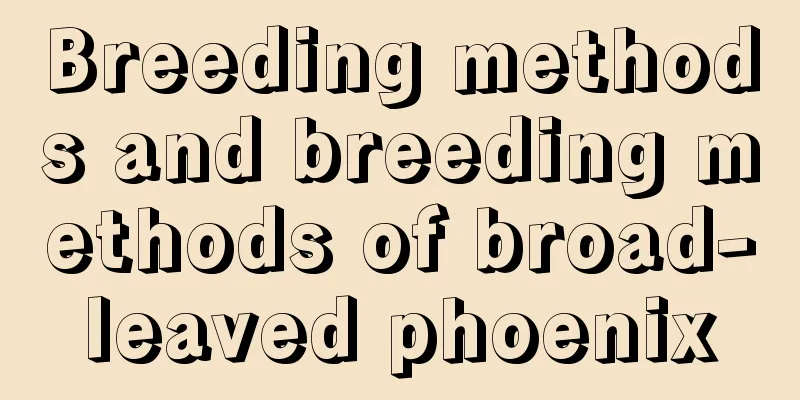Breeding methods and breeding methods of broad-leaved phoenix

1. Maintenance methods1. Soil: Broad-leaved Phoenix is suitable for growing in loose, breathable, nutrient-rich sandy soil. The soil for growing it needs to have good drainage. If conditions permit, you can buy nutrient soil for planting. 2. Light: It needs sufficient sunlight to grow. Insufficient light will affect its normal growth, causing growth problems such as excessive growth and leaf wilting. 3. Temperature: Its growth temperature should be controlled between 13 and 19 degrees. In winter, it should be moved indoors and the temperature should be controlled between seven and ten degrees. This will ensure it can safely survive the winter. 4. Water: It is very drought-resistant, so the soil in the pot should be kept moist during the growing season. In summer, you need to spray the plants appropriately to cool them down. In winter, you need to control watering and water them less frequently. 2. Breeding techniques1. Repotting: The broad-leaved phoenix grows almost all year round and has a very high survival rate. When its stems and leaves grow too high, you can pinch off the top to lower the plant shape and promote more branches. Every spring, the plant should be returned to a new pot to ensure the beauty of the plant. 2. Pruning: Newly potted seedlings should be topped off in time to promote branching. Older plants should be cut off to encourage new buds to sprout. 3. Problem Diagnosis1. Diseases: Botrytis cinerea and powdery mildew are both common diseases. They can be sprayed with thiophanate-methyl powder or liquid, or they can be prevented in daily life. 2. Pests: scale insects and aphids. This is also a common pest. First, they should be isolated, and then sprayed with 1,000 times diluted malathion emulsifiable concentrate. This has a better insecticidal effect. IV. Other issues1. Can it be raised at home: It can be raised at home, but be careful not to water it too much or too frequently, as this will cause root rot. Frequent ventilation is required to facilitate plant growth. 2. Whether it can be exposed to rain: This type of plant does not require too much water to grow, so it cannot be exposed to rain. A large amount of rainwater erosion and deposition will destroy the root structure and shorten the growth life of the plant. |
<<: Cultivation methods and precautions of Centella asiatica
>>: Cultivation methods and precautions of Yunnan Polygonatum
Recommend
How to grow green radish
1. Breeding methods Chlorophytum cochinchinensis ...
Cultivation methods and precautions for Clivia potted plants
1. Breeding methods 1. Water: It is relatively dr...
What is the flower language of Epiphyllum?
Flower Language The flower language of Epiphyllum...
How to grow purse flowers on the balcony, what should you pay attention to
1. Can it be grown on the balcony? During the gro...
How to grow and water the money tree in winter?
The money tree is loved by people for its elegant...
How to grow lily potted plants in four seasons
1. Spring Lilies are in the growth stage in sprin...
Flower language and cultural background of Buddaria
The flower language of Buddaria Buddaria is a pla...
The value of Albizia Julibrissin
The ornamental value of Albizia Julibrissin The A...
How to plant Buddaria seeds
one. step 1 For seed planting, the first thing to...
The flower language and meaning of lucky bamboo, what are the taboos when giving it as a gift?
1. The flower language and meaning of lucky bambo...
How to save seeds of five-fingered peach
How to get the seeds of five-fingered peach The f...
How to grow orchids in pots
Orchid potted plant maintenance Orchids prefer we...
Cultivation method of Ephedra sinica
1. Soil Ephedra has strong adaptability and is no...
Do strawberries like water or drought?
Do strawberries prefer moisture or drought? Straw...
How to prune northern grapes, winter pruning time
1. How to prune 1. Pruning length: When pruning, ...









